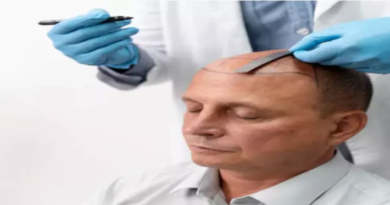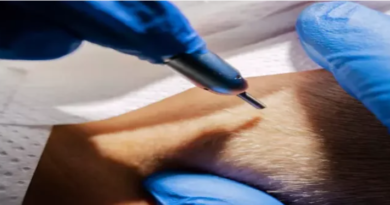Success Rate in Hair Transplantation
Hair transplantation is an aesthetic surgery procedure with a high success rate. However, the success rate depends on many factors such as the technique used in hair transplantation, the experience of the doctor and the reason for the patient’s hair loss. In general, the success rate of hair transplantation can vary between 80% and 90%. The FUE (Follicular Unit Extraction) technique used in hair transplantation has a higher success rate than other techniques. In this method, since the hair follicles are taken one by one, it is easier for the hair to look natural.
The experience and experience of your hair transplant doctor is also an important factor affecting the success rate. A specialist doctor can increase the success of the hair transplant process with the right evaluation and planning. The reason for the patient’s hair loss is another factor affecting the success rate. Hair loss caused by genetic causes gives a better result than other causes. However, factors such as the health of the patient’s scalp, lifestyle and hair care can also affect the results. As a result, the hair transplant procedure has a high success rate. However, the success rate may vary depending on factors such as the technique used, the doctor’s experience, and the reason for the patient’s hair loss.
Success Rate of Hair Transplant Technique
Hair transplantation is a method preferred by people who experience hair loss to have fuller and healthier hair. However, the success rate of the hair transplant technique may vary depending on the method used, the experience of the doctor and the hair quality of the patient. Hair transplantation process involves transplanting hair follicles taken from the donor area to balding or sparse areas. During the hair transplantation process, it is necessary to work carefully and sensitively during the removal and transplantation of hair follicles. Otherwise, unsuccessful results may occur, as a result of which the roots are damaged or not properly placed. After hair transplantation, patients should behave in a way to protect their hair for a certain period of time in order to achieve successful results. Especially during the first few weeks, it is important to be sensitive to the placement of the hair follicles and to protect the hair from friction, blows and sun. Hair transplantation is a method with high success rates when done with the right technique and in the hands of a specialist team.
Success Rate of Hair Transplant Specialist
The success rate of the hair transplant specialist can be increased with the right research and the right choices before starting the hair transplant process. Factors such as the experience and training of the specialist, the techniques used, the equipment used and the hair transplant center are important factors affecting the success rate. However, the success rate does not necessarily give a guaranteed result. The outcome of the hair transplant procedure depends on each individual’s level of hair loss, skin type, hair quality, genetic factors, age, lifestyle and the correct hair transplant procedure. In order to learn the success rate of the hair transplant specialist, you can examine the references and results about the previous procedures and get information about their experiences. In addition, you can make the right decision by meeting with experts at a reliable hair transplant center and getting detailed information about the hair transplant process.

Effects on Patient Success Rate
The success rate of the hair transplant procedure depends on the patient’s suitability for the hair transplant procedure and the procedures to be followed after the procedure. The patient’s suitability for hair transplantation depends on factors such as hair loss level, skin structure, hair quality, genetic factors, age, lifestyle and other medical conditions. Therefore, the hair transplant specialist first evaluates the patient’s hair loss level and suitability. The correct application of the procedures to be followed after the procedure is also an important factor affecting the success rate. Following procedures such as drug use, post-procedure care, proper nutrition, and not smoking in accordance with the recommendations of the specialist increases the success rate of the procedure.
Success Rate in Men
The success rate of hair transplantation in men is higher than in women. This is because men’s hair loss is more pronounced and common than women. For this reason, hair transplantation is performed more frequently in men and there are experts who have more experience in this field. The success rate of hair transplantation in men depends on the degree of hair loss, hair quality and skin structure. In addition, the evaluation of the scalp structure of the person before the procedure, the selection of the correct hair transplantation technique and the appropriate application of the procedures to be followed after the procedure are also factors that affect the success rate. In order to increase the success rate of hair transplantation in men, it is important to evaluate the scalp before the procedure, to choose the right hair transplantation technique, and to provide regular follow-up and care after the procedure. In addition, it is recommended to reduce the factors that negatively affect health, such as smoking and excessive alcohol consumption, as much as possible.
Success Rate in Women
Although hair transplantation is a procedure that can also be applied to women, it may require a slightly different process than men. For this reason, the success rate of hair transplantation in women may be slightly lower than in men. Hair loss in women is generally not more common than in men, and hair loss can vary. For this reason, if hair transplantation is to be performed in women, the cause of hair loss should be determined first and an appropriate treatment plan should be established. In addition, since the hair structure and hairline of women may be different from men’s, careful planning should be done before hair transplantation. In this way, successful results can be obtained in women by using appropriate techniques.
How Long Does Hair Transplantation Take?
Hair transplantation is a process that can vary depending on the technique to be applied and the size of the area to be transplanted. Generally, the hair transplant process takes between 4 and 8 hours. This time may vary depending on how large an area the process covers and the techniques used. For example, hair transplantation using the FUE technique may take longer than the FUT technique. In addition, during the hair transplantation process, the number of hair strands to be transplanted is also a factor that affects the duration of the procedure. Transplanting more hair strands may also increase the duration of the procedure. After the hair transplant procedure, the recovery period should also be included in the procedure. The recovery period can usually range from a few days to a few weeks.
Why Didn’t My Hair Transplant Work?
Hair transplantation process usually gives successful results when applied properly. But sometimes the process may fail and the reason may be due to several factors. Some reasons could be:
Wrong Technique or Technical Application: Improper application of the techniques used in hair transplantation may cause the procedure to fail. For this reason, it is important that the doctor who will perform the procedure makes a careful planning before the procedure and chooses the right technique.
Insufficient Donor Area: A sufficient amount of healthy donor hair is needed for hair transplantation. Insufficient donor area can cause hair transplantation to fail.
Health Status of the Patient: Hair transplantation may fail in patients with certain health problems. For example, hair transplantation may be risky for patients with diabetes, high blood pressure or blood clotting disorders.
Smoking: Smoking can slow down the post-procedure healing in hair transplantation and adversely affect the results.
Care Errors: If adequate care is not taken after hair transplantation, the result of the procedure may be adversely affected. For example, not taking the necessary antibiotics for wound healing or not moisturizing the scalp enough.
Genetic Factors: Shedding after hair transplantation may be due to genetic factors and may result in the failure of the procedure.
If your hair transplant was unsuccessful, you should first talk to your doctor to understand what the reason is. Your doctor will give you an evaluation and determine the cause. Then he will present you with the appropriate treatment options.
You can benefit from the privileges by contacting us.
• Best price guarantee
• You will not encounter hidden payments.
• Free transfer to airport, hotel or hospital
• Accommodation is included in the package prices.




